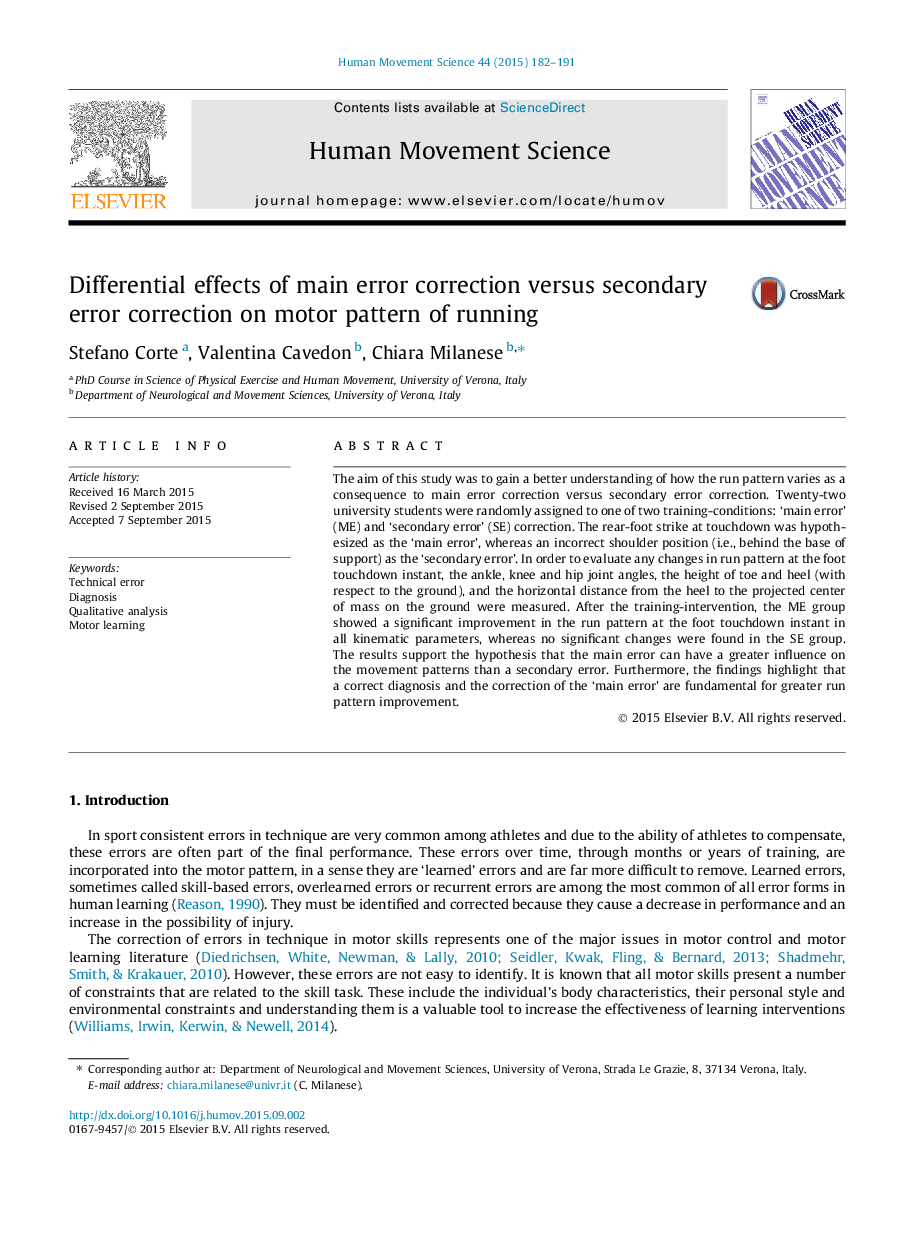| Article ID | Journal | Published Year | Pages | File Type |
|---|---|---|---|---|
| 7291821 | Human Movement Science | 2015 | 10 Pages |
Abstract
The aim of this study was to gain a better understanding of how the run pattern varies as a consequence to main error correction versus secondary error correction. Twenty-two university students were randomly assigned to one of two training-conditions: 'main error' (ME) and 'secondary error' (SE) correction. The rear-foot strike at touchdown was hypothesized as the 'main error', whereas an incorrect shoulder position (i.e., behind the base of support) as the 'secondary error'. In order to evaluate any changes in run pattern at the foot touchdown instant, the ankle, knee and hip joint angles, the height of toe and heel (with respect to the ground), and the horizontal distance from the heel to the projected center of mass on the ground were measured. After the training-intervention, the ME group showed a significant improvement in the run pattern at the foot touchdown instant in all kinematic parameters, whereas no significant changes were found in the SE group. The results support the hypothesis that the main error can have a greater influence on the movement patterns than a secondary error. Furthermore, the findings highlight that a correct diagnosis and the correction of the 'main error' are fundamental for greater run pattern improvement.
Related Topics
Life Sciences
Neuroscience
Cognitive Neuroscience
Authors
Stefano Corte, Valentina Cavedon, Chiara Milanese,
